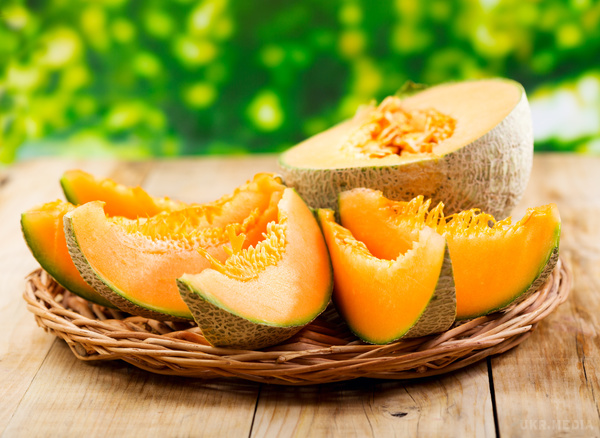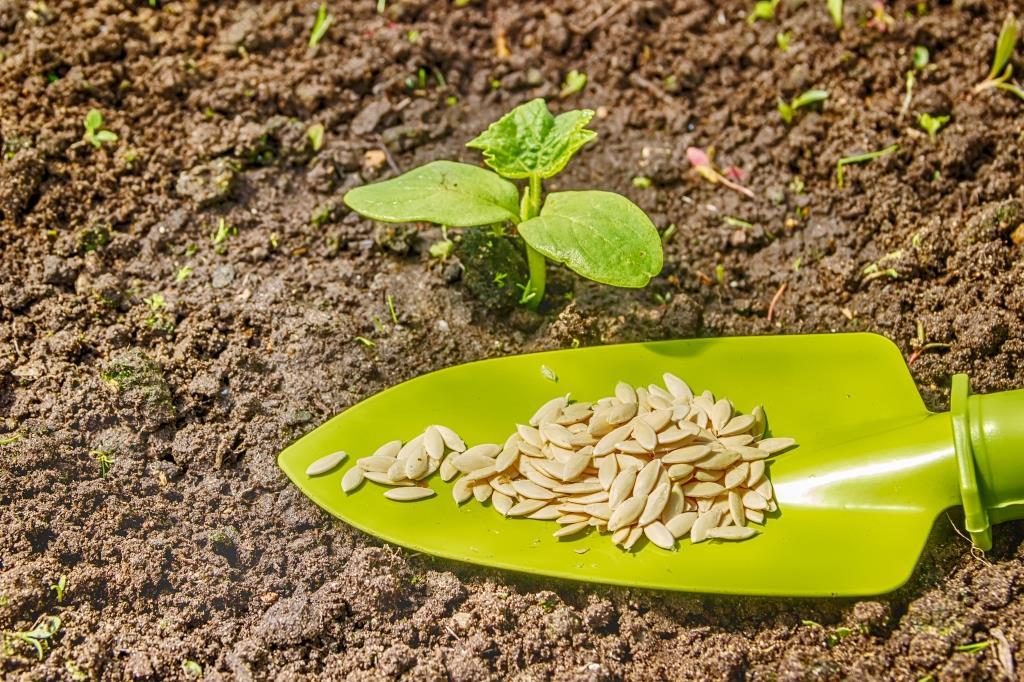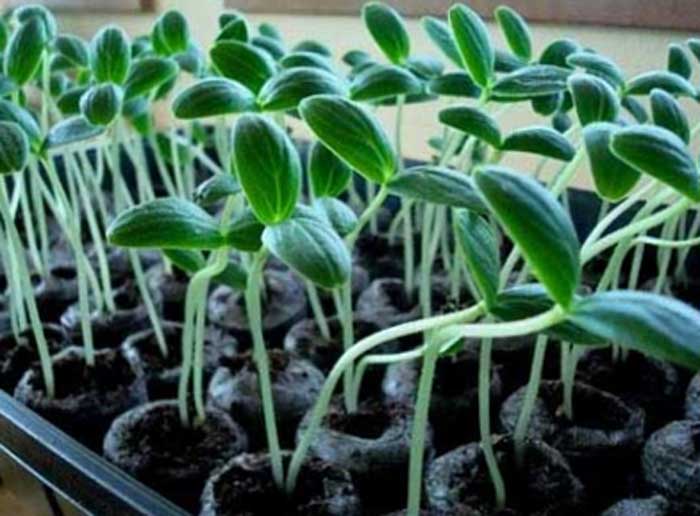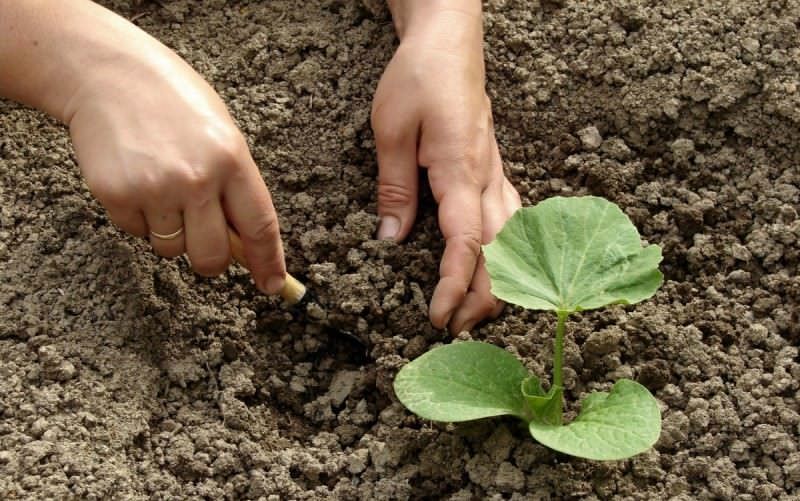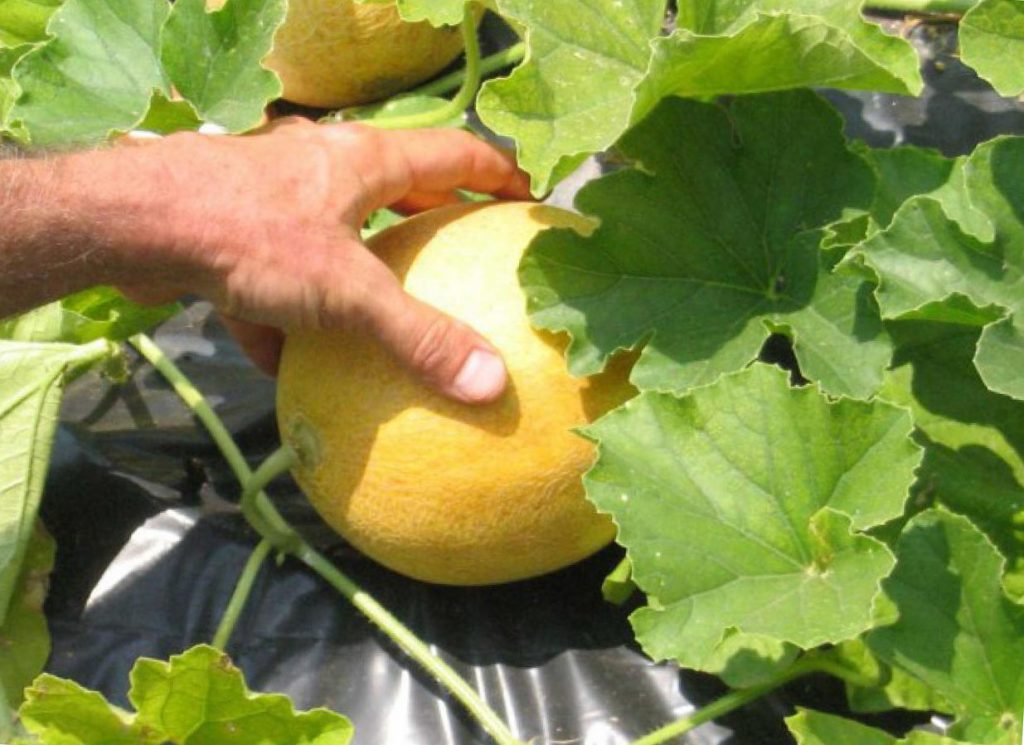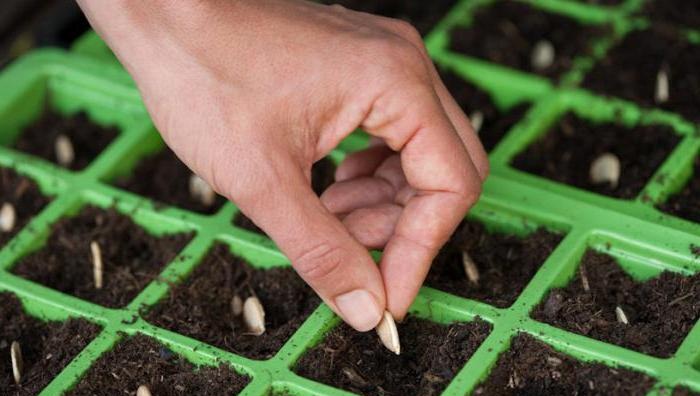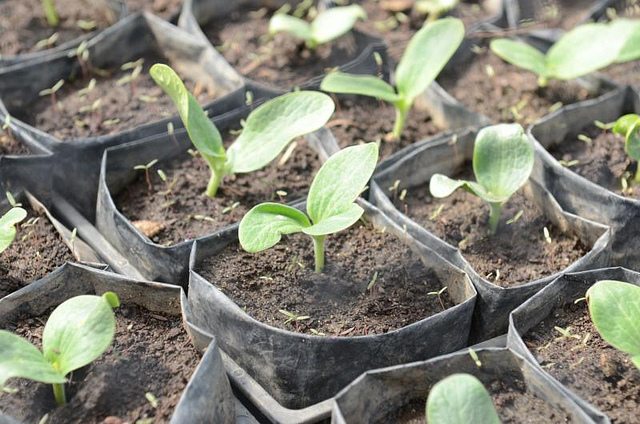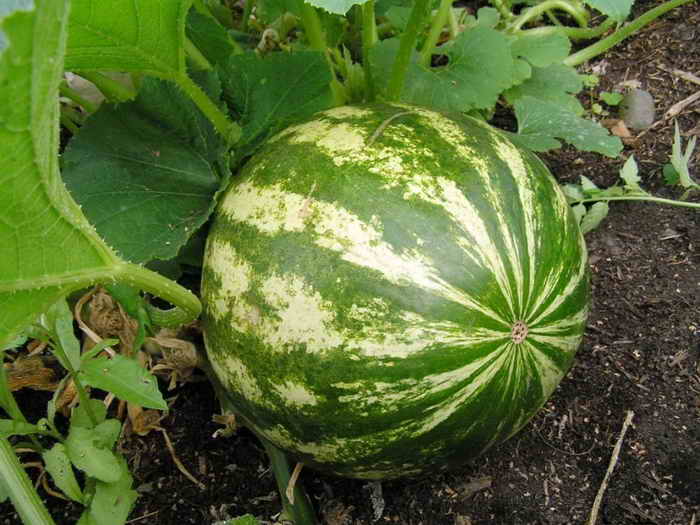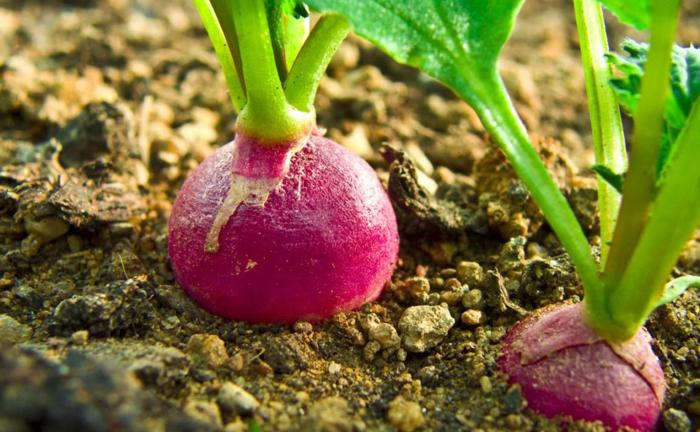Content:
Melon is a thermophilic culture that belongs to the Pumpkin family. The country of origin of the melon is considered to be Central and Central Asia. The fruit has a round or elongated cylindrical shape, and its color can be of different shades: white, yellow, green, brown with green stripes.
Planting and care in the open field
When choosing melon seeds, it is worth considering that there are many hybrids and varieties that are resistant to temperature extremes, quick ripening of the crop and a short growing season. Shop counters are literally bursting with the choice of varieties with such data. Achieve high and high-quality yields only when grown in compliance with the recommendations of cultivation agrotechnics.
Breeders do not advise growing Central Asian melon varieties in the Moscow region, the climate of the middle zone will provoke weakening of the bushes and poor flowering. You can get good yields only if there is an abnormal summer heat. If the question arose of how to plant a melon and which species to choose, among the best varieties suitable for central Russia stand out:
- Cinderella;
- Augmented;
- Galileo;
- Collective farmer;
- Iroquois and Aikido varieties.
They are resistant to powdery mildew and fusarium, have a high sugar level (about 8-12%), and their fruits ripen quickly. The weight of one fruit can reach 12 kg.
Melon is usually classified as a southern plant, it is able to withstand soil temperatures up to 63 ° C. And the maximum permissible air temperature can reach 43 ° C.
Sharp temperature drops often slow down the growth of melons, and a decrease in temperature to + 10 ° stops the growing process. The death of the plant is not excluded when the air temperature drops to -1 °. The optimum temperature for active melon growth is from +30 to + 40 ° С.
For melon cultivation, it is necessary to choose beds with sufficient natural light. If the plant lacks light, this will provoke a significant gap in the flowering of staminate and pistillate flowers, and also minimize the total number of ovaries. Cloudy weather slows down photosynthesis, lowers the level of sugar and dry matter in fruits.
The melon culture is photophilous and, subject to a 12-hour daylight hours, is prone to early flowering and ripening. If the maximum daylight hours are about 8 hours, plant growth will be slowed down. Melons have a very good root system that reaches all soil layers. Even in extreme heat, the roots retain moisture, due to which they do not allow the plant to die. The culture prefers light soils and grows poorly on loams.
Air humidity has no effect on melon growth. The crop can withstand drought, but fertilization and timely watering can help increase yields. Melons can be planted on the same plots of land, but no more than two years in a row. The best beds for melons are considered to be those on which onions or cabbage, corn for silage, winter wheat or barley were grown.Planting plants in the same garden for more than three years will lead to a decrease in yield and increase the risk of various diseases.
How to plant melons outdoors with seeds
For planting seeds in open ground, it is necessary to use a well-formed, strong seed that was obtained from a crop two or three years ago. The soil must be pretreated with fertilizers: compost or minerals such as double superphosphate. It should be borne in mind that fresh seeds produce more stamens than pistils, so there will be few ovaries on plants. And old seeds give productive lashes, with good yields in the future.
The dug up and fertilized bed must be marked with holes, maintaining a distance between them of about 75 cm. The gap between the beds should be at least 80 cm so that they do not crowd and do not slow down the growth of plants. Each hole is filled with humus and watered before planting seeds. The ground must warm up well, otherwise the seeds will not germinate. In one hole you need to plant three to four seeds, water abundantly and mulch on top with dry earth.
If, according to the weather forecast, a decrease in temperature is expected, which is completely normal at the end of April, the beds are covered with foil. In the daytime, it can be removed, but at night it is better to cover the area to preserve the heat. During the growth process, the melon requires close attention. With the appearance of the first shoots, they need to be thinned out, leaving the largest and strongest in each hole. After the fourth leaf appears, the plant must be grafted. Thanks to this procedure, the lateral shoots will develop much faster.
Between the rows of seedlings, the soil must be periodically loosened. This is done carefully, since there is a risk of touching and damaging the root system. Weeds must be removed in a timely manner, as they interfere with the melon development and drain the soil, growing next to the melon. You can get an even better yield by fertilizing with saltpeter, mullein or chicken manure infusion. The first feeding is done two weeks after planting, always containing nitrogen and potassium. The following dressings are carried out every two to three weeks.
How to plant a melon for seedlings
Quality melon seedlings can be obtained by planting the seed in special containers or flower pots in order to avoid any damage to the root system in the future. Two grains are planted in a pot with a diameter of 10 cm, full-fledged seedlings grow for 35 days. If the seeds are not pretreated, they must be soaked for 30 minutes in a solution of purple manganese, and then rinsed under running water. Also, seeds can be germinated in a solution of trace elements for 24 hours.
Melon sprouts are grown preferably in polycarbonate greenhouses or greenhouses. This is especially true of the northern regions of Russia and Siberia. You can replace them with a window sill or any suitable place illuminated by a fluorescent lamp, which is installed 15 centimeters above the seedlings. Instead of the usual soil, you can use loose humus, a mixture of soil from the site and add 0.5 liters of diluted ash to it. It is recommended to add peat if the soil is too heavy. The soil is steamed and then added:
- superphosphate - 1 tablespoon;
- potassium sulfate - 1 teaspoon.
Sprouted seeds are sown in holes 1.5 cm deep, covered with plastic wrap, the temperature should not exceed 20 degrees.Greenhouses and greenhouses provide plants with sufficient light and protect them from pests and frost. If the seedlings are grown on a windowsill, they must be hardened.
When watering, do not allow water to fall on the stems. To avoid this, the soil around the sprouts is formed conically. Water in moderation, if the water stagnates, the root collar will rot. You need to feed the seedlings no more than two times:
- at the first feeding, use bird droppings - in a ratio of 1:15 or dissolved mullein - in a ratio of 1:10, add one tablespoon of superphosphate to the mixture;
- for the second feeding, use mineral fertilizers - Kemir-wagon or Solution.
The fact that the melon is ready for planting in open soil will be evidenced by the appearance of four or five full leaves.
When and how to plant a melon correctly? Spring frosts can periodically return until the beginning of June, so it is extremely inappropriate to plant seedlings before this date. For planting, you need to prepare high plots of land (10-15 cm) up to 0.3-0.4 m wide. On such beds, the melon culture is planted in one row, and with a plot width of 0.3 m - in two rows.
The soil must be carefully dug up, adding for every square meter of earth:
- one teaspoon of urea;
- one tablespoon of superphosphate;
- one teaspoon of potassium sulfate;
- one bucket of humus or compost.
Treat the garden with a pink solution of copper sulfate or potassium permanganate, be sure to observe the proportion - one tablespoon for a ten-liter bucket of water. Once the holes are dry, the seedlings can be planted at a distance of about 0.4-0.5 meters. Make arcs over the planted shoots and cover them with transparent film. The parameters of the arcs in width and height should be 0.7 meters.
If the temperature suddenly drops, old polyethylene or any other material is applied to the top layer of the arc, which will prevent freezing and air hypothermia under the film. With the onset of warm sunny weather, the film is removed so that the plants can be ventilated. It is necessary to completely remove the protective layer from the arches in the second half of June, taking into account the weather conditions. In the 20th of June, an active flowering period begins and insects will need access to pollinate the ovaries. After the film is removed, the beds must be weeded out and the shoots must be evenly distributed throughout the entire territory.
Melons care rules
Watering the plant should be done once every seven days, the water should not be cold. Pour under the root system, but avoid getting liquid on the root collar. If the weather is hot, you need to water in the evening, and if it's cool, early in the morning. It is required to loosen the soil after each watering, and to weed until the main leaves of the crop close.
Ovaries are often formed on lateral shoots. For more active branching, the main stem needs to be pinched slightly, but only after the sixth leaf appears. The first or second lateral branch node, as a rule, forms female-type flowers.
After the first two or three fruits have formed, all the formed ovaries are removed, each tip of the shoots is pinched. Removing shoots without ovaries will help improve the illumination of the melon. In the interval between a couple of waterings, plant feeding is done. It is not recommended to abuse nitrogen fertilizers; strict proportions must be observed in order to avoid accidental death of melons and a decrease in yield. Plants can be fed with herbal infusions, organic or mineral substances.
Until the flowering period of the sprouts begins, it is recommended to use mullein or ammonium nitrate for gravy. With the appearance of flowers, a complete set of mineral fertilizers is required.If one fruit shows increased growth, provided that the rest of the melons are yellow, this is considered an alarming symptom. This suggests that the crop is not getting enough nutrients. The situation can be corrected only with the help of additional feeding, using slurry or urea. After a certain period of time, you can use a light solution of potassium permanganate, diluted in a bottle.
How to harvest
The full ripening of the melon fruit is evidenced by the appearance of ring-shaped cracks in the stem and the typical melon smell. The melon should protrude slightly under the fingers, and if it is lifted, it should be easily separated from the stem. Harvesting takes place as it ripens, usually in early August. Ripe melons can be eaten, made jam or preserves for the winter. Fruits that are intended for transportation must be removed 48 hours before full ripening, and winter varieties are harvested slightly underripe.
Melons are best stored when they are harvested during the removable ripening period. This condition can be determined by the cracks covering the skin of the fruit, moderately pronounced and covering most of the melon. The yellow hue of the rind is an obvious indicator of crop maturity. It is worth remembering that overripe melons are not intended for long-term storage.
